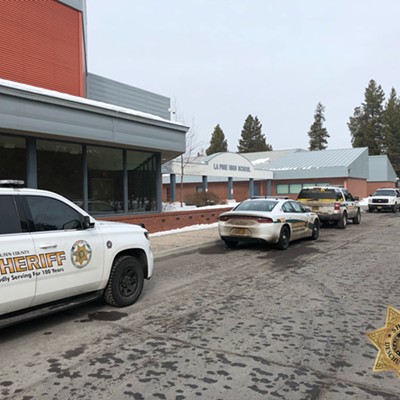Would the state of Oregon be better off if it was its own banker? Ann Kramer thinks so.
Kramer, chair of the board of the Gorge Grown Food network, an organization trying to promote a regional food system in the Columbia Gorge, writes on the Blue Oregon site that having a state bank could help “recharge Oregon’s economy.”
“The State of Oregon collects and spends lots of money,” Kramer says. “Did you ever wonder where that money goes? Right now, much of it sits in the TBTF [‘Too Big to Fail’] banks and they receive the benefits. In fact, we use the TBTF banks for lots of government services — even paying them to administer the OR SNAP program (food stamps). Instead, a state bank could provide these services, saving us millions as well as interest income returning to state coffers.”
The State Bank of Oregon, she adds, also could team up with local Oregon banks to make low-cost loans to agriculture, small business, economic development and students. “This availability of credit has all but disappeared from the TBTF banks, but with a State Bank of Oregon, small businesses and farms, which are the backbone of [Oregon’s] economy, could once again get back to work!”
Kramer’s model, the Bank of North Dakota, was established in 1919 in response to a populist revolt over the high rates of interest that big out-of-state banks were charging farmers. It was given the mission of “promoting agriculture, commerce and industry” in the state.
“It was never intended for BND to compete with or replace existing banks,” the bank’s website says. “Instead, Bank of North Dakota was created to partner with other financial institutions and assist them in meeting the needs of the citizens of North Dakota.”
Eric Hardmeyer, president of BND, explained last year in an interview with Mother Jones magazine how, by being cautious in its investments, the state bank managed to avoid the disastrous impacts of the real estate bubble: “We’re a fairly conservative lot up here in the upper Midwest and we didn’t do any subprime lending, and we have the ability to get into the derivatives markets and put on swaps and callers and caps and credit default swaps and just chose not to do it, really chose a Warren Buffett mentality — if we don’t understand it, we’re not going to jump into it.”
The BND, which has about $4 billion under its management, acts as the repository for all state taxes and fees and pays back the profit it makes in the form of dividends to the state treasury. “Probably this year we’ll make somewhere north of $60 million, and we will turn over about half of our profits back to the state general fund,” Hardmeyer said. “And so over the last 10, 12 years, we’ve turned back a third of a billion dollars just to the general fund to offset taxes or to aid in funding public sector types of needs.”
When the state faces a budget shortfall it can call on the bank for help. Hardmeyer recounted how, after the dot-com bubble burst in the early 2000s, the state fixed its $40 million deficit: “The governor just simply said all right, we’re going to turn back 1% of all general fund agencies, and the Bank of North Dakota, you will declare another dividend to make up the balance. And so we did that.”
Inspired by the success of the Bank of North Dakota, 11 other states are now looking into the idea of starting their own version, and Kramer thinks Oregon should be one of them. It’s hard for me to come up with a good reason why it shouldn’t.


























